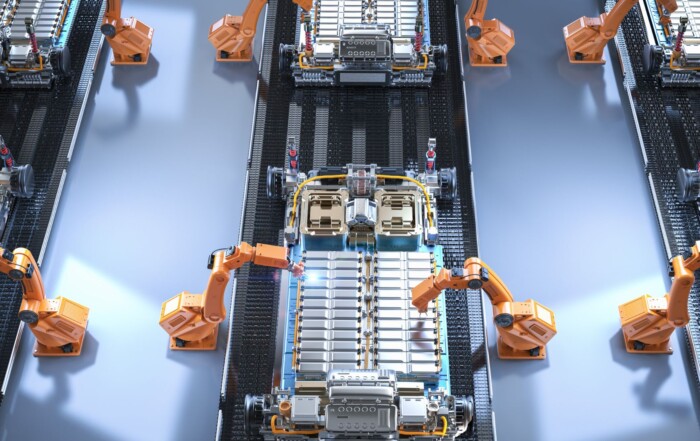The latest product developed by InnoSenT is on the radar
Interview about the new 60GHZ distance radar IDR-2050 to mark the product release.
InnoSenT is developing a new product specifically for the typical industrial application areas of distance measurement. The product has yet to go into series production, but we’re providing you with exclusive information already now about the radar sensor’s features in this interview. We asked Product Management at InnoSenT GmbH three crucial questions about the new product. Dr Eva Maria Buchkremer provides answers in the interview about the IDR-2050 radar sensor and informs us about its individual functions, special features, and application possibilities. As always, technical details are available on the data sheet available in InnoSenT’s download portal.
The name IDR-2050 is stands apart from the other product names, because it includes a brand-new letter combination. What does the name stand for and what kind of radar is the IDR-2050?
Eva Buchkremer: ‘In recent years, we’ve sometimes introduced new product names to make it easier for our customers to tell them apart. One example is the InnoSenT Motion Detection series – or IMD for short – which boasts a variety of cost-effective radar solutions for use in motion detection. The abbreviation IDR is new and stands for InnoSenT Distance Radar. The name refers to the IDR-2050’s function and use case. It’s a sensor for recording distances. Although many of our radar solutions do this, this product – like the iSYS-6030 – specialises in distance measurement.
The features are optimally adapted to two industrial uses: fill level measurement and collision avoidance. With the IDR-2050, we now finally offer a radar solution in this area with a shorter range. That’s because in numerous applications, distances are measured at a short distance. One example of this is use in smaller tanks or silos in the food industry or chemical industry and agriculture. If the contents of more compact containers are to be monitored, then price is often a key factor as well – customers need simple and cost-effective solutions that deliver accurate and reliable measurement results at a short distance. And that’s just what the new IDR-2050 offers.’
What are the functions and specifications of this new distance radar?
Eva Buchkremer: ‘The IDR-2050 is a 60 GHz sensor. As an FMCW radar, it’s able to measure speed, direction of movement, and distance. It detects movements, but also stationary objects. Determining the signal strength is useful for filtering out irrelevant detections and making adjustments based on the application area. With the IDR-2050, we achieve high-precision distance measurements in the millimetre range. We managed this through innovative DSP algorithms and advanced calibration technology. The sensor has an adjustable range of 0 to 10 m. With an aperture angle of 6°, it’s possible to perform focused measurements of different material surfaces and different fill materials.
The IDR-2050 boasts a built-in signal-processing unit. This reduces development work and makes the product easier to integrate and detection results easier to interpret. The sensor outputs the processed information about the targets via a UART interface in the form of a list.
In addition to various filter and customisation options that are easy to implement using the InnoSenT GUI or API, the sensor also has three operating modes. These have already proven themselves for typical industrial applications of distance measurement, such as fill level detection and collision protection.
In addition to the default setting, there is also a quick measurement mode and a long integration mode. The functions differ in terms of the number of detection targets and the update rate. The longer integration mode has a much longer measurement timeframe and better speed resolution. We recommend this mode for capturing difficult-to-detect objects with a small RCS, as the signal-to-noise ratio is optimised here. The quick measurement mode relies on an extremely fast update rate, but only records a maximum of 10 targets at a time. Customers select the operating modes depending on which measurement characteristics – for example speed or sensitivity – are relevant to their application.’
What sets the IDR-2050 apart from comparable products?
Eva Buchkremer: ‘One of the sensor’s special features is its unique design. Beyond the design of the antenna for the focused radar beam, also the shape of the lens and radome is special. It’s flat and close to the antenna, making the product very compact. The new design was challenging due to the high standards set in the target specifications. However, user-friendliness is of great importance to us. Thanks to its smaller dimensions, the product is easier to install in standardised housings with little space or already existing systems. Because of its flat shape, the customer doesn’t need any special product design, unlike with the iSYS-6030, for instance, which has a dome-shaped lens.
The radar sensor also stands apart thanks to its outstanding price-performance ratio. Our efficient pricing makes the IDR-2050 a serious competitor to ultrasonic systems in its range category. Ultrasonic sensors are generally common in the field of contactless level measurement. Because they can be obtained for very cheap. Radar, however, has many advantages – it makes contact-free measurements and is much more robust. Measurements taken by the IDR-2050 remain reliable and precise even under extreme conditions. Its lower rate of failures or measurement errors and its additional functionality make the sensor particularly attractive for near-range distance measurement compared to ultrasonic sensors.’
Thank you for this interview!
picture: © Production Perig by adobe stock
Share this Content
PERSONAL DETAILS
Eva Buchkremer
Since the product management department was established in 2018, Dr. Eva Maria Buchkremer has an important role within InnoSenT. From the start of her job, she has been the contact person for current innovation projects in the field of industrial radar sensors and has been pushing the product development. She is the interface between the market and the development department. In doing so, she identifies unsolved customer problems, picks up on trends and specifies requirement specifications for product innovations in coordination with the radar experts.
As Head of Product Management, she defines future product strategies and aligns the current portfolio with customer needs and market interests.
One of her strengths is to get to the heart of the topic and not lose sight of the goal despite possible stumbling blocks. She brings in her many years of experience and expertise as a product manager from the medical technology industry and is a doctor of natural science.
“Together at InnoSenT, we have made some achievements since the introduction of product management. Some exciting development projects have been successfully completed during this time. We have also set a new course for the future and want to develop new markets. In some cases, we are breaking new ground and establishing new skills in the company. My tasks as a product manager are very diverse, so the work is always interesting. I have the opportunity to initiate new projects and am actively involved in the product design process. For me, this freedom and variety makes product management a dream job. ”, says Eva Buchkremer about her current job at InnoSenT.

Dr. Eva Maria Buchkremer
InnoSenT GmbH
Head of Product Management
Mail: eva.buchkremer[at]innosent.de


